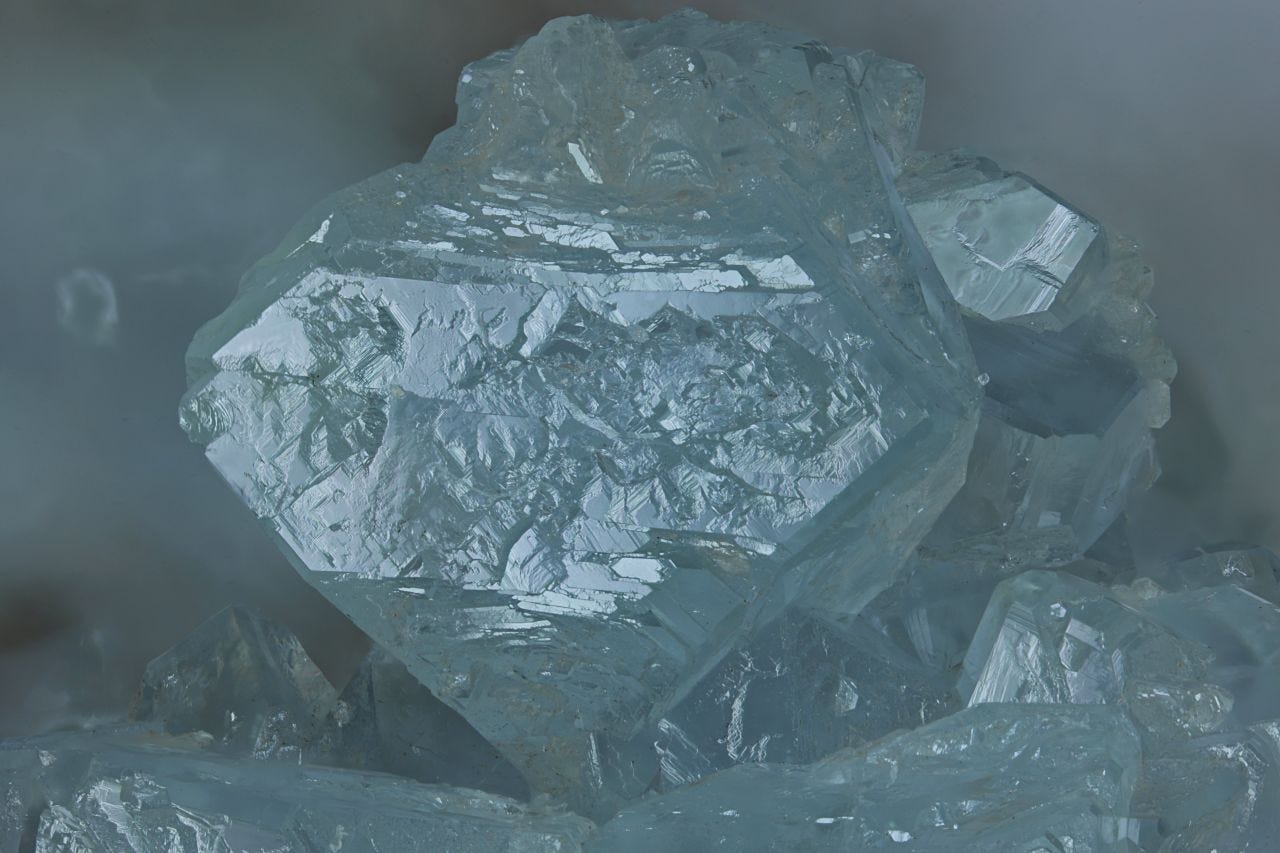Boracite is a rare magnesium borate chloride mineral, formula Mg3(B7O13)Cl, known for forming pseudocubic crystals that are actually orthorhombic at room temperature. It exhibits notable pyroelectric and piezoelectric effects.
Pyroelectric means that boracite develops an electrical charge when heated or cooled. Piezoelectric means that it develops an electrical charge when subjected to mechanical pressure or stress.
Despite the internal structure changing to orthorhombic at room temperature, the crystals often retain their original cubic external shape (like cubes, tetrahedrons, dodecahedrons, or combinations). This phenomenon is called paramorphism, and the resulting crystals are often described as pseudocubic or pseudo-isometric. This shape retention is a key characteristic.
They can also have interesting surface features, such as the one shown.
Boracite is primarily found in evaporite deposits, formed by the evaporation of ancient seas or lakes rich in boron, magnesium, and chlorine. It's often associated with other evaporite minerals like halite, sylvite, carnallite, anhydrite, gypsum, and other rarer borates and chlorides.
The Boulby Mine is part of the evaporite salt and potash deposits of the Zechstein formation. The Zechstein formation is one of the world's most extensive and thickest ancient evaporite sequences. It underlies a huge area of Europe, is stratigraphically complex and thick (especially where salt tectonics has occurred), and is economically vital as a source of salts, potash, a seal for hydrocarbons, and containing source and reservoir rocks for natural gas. It represents a major geological event in Europe's history during the Late Permian period (roughly 258 to 252 million years ago).
Salt tectonics describes how buried salt layers, due to their unique physical properties (low density and ability to flow), can actively deform surrounding rock layers and create complex geological structures over millions of years.
The Zechstein Sea, from which these deposits formed, covered a vast area of Northwest and Central Europe. It stretched across what is now the North Sea, the United Kingdom (especially eastern England), the Netherlands, Denmark, Germany, Poland, and touched parts of Lithuania and potentially the edge of Belarus/Ukraine.
Below: Boracite, Boulby Mine, Loftus, Redcar and Cleveland, North Yorkshire, England, UK. Width of view 6mm.





Excellent summary Steve. One of my regrets is that I never went down on a field trip there.